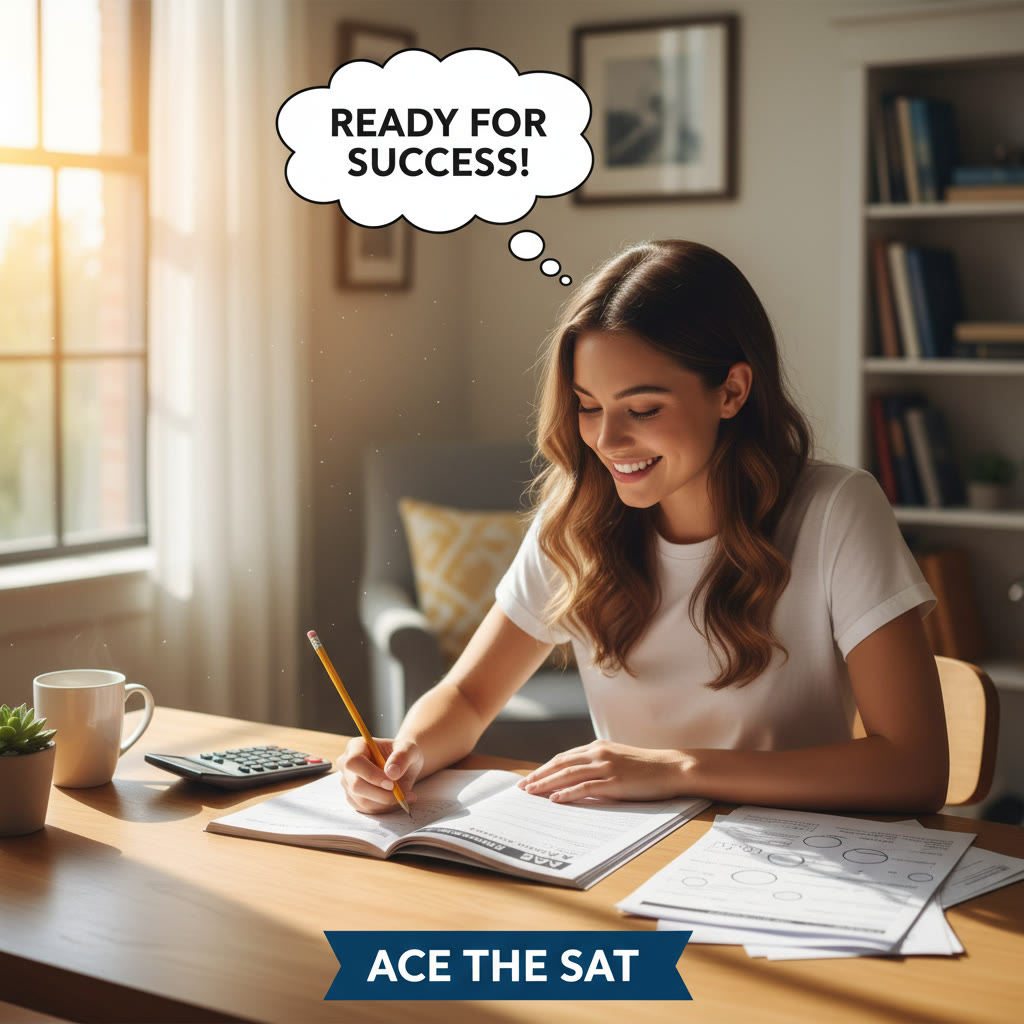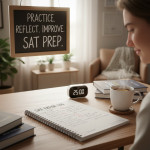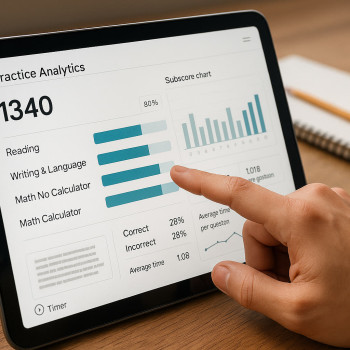Understanding the SAT at a Glance
Walking into the SAT can feel a lot like stepping onto a stage: lights, expectations, and the knowledge that preparation matters. The good news is that the SAT is predictable by design. Once you know the sections, timing, and question types, you can shape a study plan instead of guessing your way through test day. This breakdown aims to demystify every piece of the test and give practical, calming advice you can use during prep and on test day.
Big-picture structure and scoring
The SAT is built around three core testing areas: Evidence-Based Reading and Writing and Math. Most students take the SAT without an essay; the College Board discontinued the optional essay as a regular part of the test. The entire test takes 3 hours to complete, with a score range from 400 to 1600, split evenly between two section scores: 200 to 800 for Evidence-Based Reading and Writing and 200 to 800 for Math.
Here is a compact view of that structure in a table you can memorize:
| Section | Time | Questions | Score Range |
|---|---|---|---|
| Reading Test | 65 minutes | 52 multiple-choice | Part of 200-800 EBRW |
| Writing and Language Test | 35 minutes | 44 multiple-choice | Part of 200-800 EBRW |
| Math – No Calculator | 25 minutes | 20 questions (multiple-choice and grid-in) | Part of 200-800 Math |
| Math – Calculator | 55 minutes | 38 questions (multiple-choice and grid-in) | Part of 200-800 Math |
Totals: 3 hours of testing time, 154 questions across the main sections. Remember: the Math score and the Evidence-Based Reading and Writing score combine to form your overall 400-1600 score.
How the Reading Test works
The Reading Test is about comprehension, critical thinking, and efficiency. You will encounter 5 passages and 52 questions. The passages are drawn from a range of sources and styles so the test measures how well you can read and analyze different types of writing.
Passage types and what to expect
- Literature: short fiction or excerpts that emphasize character, tone, and theme.
- Historical documents: speeches or essays from political or social contexts.
- Social sciences: psychology, sociology, or economics passages focusing on argumentation and evidence.
- Natural sciences: biology, chemistry, physics, focusing on data interpretation and methodology.
- Paired passages: two short texts on a similar topic, requiring comparison and synthesis.
Question types and strategies
- Detail questions ask about a specific line or fact. Strategy: refer back to the passage and underline the line in your mind before answering.
- Inference questions require reading between the lines. Strategy: find the evidence in the passage that best supports the inference.
- Vocabulary-in-context asks what a word most likely means in that sentence. Strategy: use the sentence context and surrounding clues, not a memorized definition.
- Function and purpose questions ask why the author included a sentence or paragraph. Strategy: consider how that piece affects tone, evidence, or organization.
- Big-picture questions focus on theme, central idea, or author’s perspective. Strategy: summarize the passage in one sentence before reading answers.
Timing tip: 65 minutes for 52 questions works out to about 75 seconds per question, but you should budget time by passage. Many students read the passage actively with a pencil—underlining topic sentences, marking transitions, and annotating key lines—which helps in answering faster.
Writing and Language: what the test measures
The Writing and Language Test emphasizes revision and editing. You will see 4 passages, each containing multiple lower-stakes paragraphs and 44 questions in 35 minutes. Questions fall into two broad categories: expression of ideas and standard English conventions.
Common question types
- Grammar and usage: subject-verb agreement, verb tense, pronoun clarity, modifiers.
- Punctuation: commas, semicolons, colons, and dashes—often focusing on clarity and sentence flow.
- Sentence structure: sentence combining, reduction of wordiness, logical sentence order.
- Paragraph-level structure: transitions, topic sentences, evidence placement.
- Rhetorical skills: improving the organization, tone, and clarity of passages with respect to intended audience.
Approach and time management
35 minutes for 44 questions gives you roughly 48 seconds per question. That speed means you should lean on rules you know and use process-of-elimination quickly. Read the sentence in context before choosing an answer; a grammatically correct option might still be wrong if it conflicts with the passage’s tone or purpose.
Math section explained: No Calculator and Calculator
The Math section tests algebra, problem solving with data, some advanced algebra, and a few geometry and trigonometry topics. It’s split into two portions: 25 minutes with no calculator and 55 minutes with a calculator. Together they contain 58 questions.
Content categories
- Heart of Algebra: linear equations, systems, and interpreting linear functions.
- Problem Solving and Data Analysis: ratios, rates, percentages, statistics, and interpreting data in tables and graphs.
- Passport to Advanced Math: quadratic and higher-order equations, non-linear expressions, and function manipulation.
- Additional topics: geometry, basic trigonometry, and complex numbers are tested less often but do appear.
Question formats
- Multiple-choice questions with four answer choices.
- Grid-in questions, or student-produced responses, where you provide a numeric answer on a grid. No answer choices to eliminate, so setup and double-check are crucial.
Calculator rules and strategy
Bring an approved graphing or scientific calculator for the Calculator section. However, calculators are not always a shortcut. For some problems, mental math or simple algebra is faster and less error-prone. During prep, practice both ways so you know when the calculator helps and when it slows you down.
How scoring works and what raw scores mean
The SAT uses a raw-to-scaled conversion. Each correct answer typically yields one point in the raw score; there is no penalty for wrong answers, so guessing is encouraged when you can eliminate one or more choices. The raw score is converted to section scores through a scale that adjusts slightly for each test form to maintain consistency.
Important scoring facts
- Only correct answers count; no deduction for wrong answers.
- Scaled scores range 200-800 per main section and 400-1600 total.
- Percentile ranks are published to show how scores compare to those of other test takers.
Common question traps and how to avoid them
Standard traps test haste and assumption. Here are recurring pitfalls with quick defenses.
- Answering from memory in Reading: always refer back to the passage for evidence.
- Picking the most complicated math solution: simpler, direct methods often work best.
- Misreading qualifiers in Writing and Language, like always or never: pay attention to intensity words.
- Forgetting to consider units or context in data questions: check units and labels before calculating.
- Rushing grid-in answers: ensure the format is correct (decimal, fraction, or integer) and fits the grid properly.
Practical timing strategies and a sample pacing plan
Pacing is personal, but having a plan reduces anxiety. Below is a sample pacing plan you can adjust to your strengths and weaknesses. It assumes you will move steadily and reserve a short buffer for review when possible.
| Section | Time | Planned strategy | Buffer |
|---|---|---|---|
| Reading | 65 minutes | 12 minutes per passage average; read actively and mark evidence | 5 minutes to review flagged questions |
| Writing and Language | 35 minutes | Answer sequentially; skip very slow questions and mark them | 3 minutes to revisit |
| Math No Calculator | 25 minutes | Tackle straightforward algebra first; leave 2-3 grid-ins for last | 2 minutes |
| Math Calculator | 55 minutes | Do easier multiple-choice problems first, then grid-ins | 7 minutes |
Practice this pacing in full-length, timed practice tests. Time management improves most with repeated exposure to test timing and types.
Designing a study plan based on section strengths
Your study plan should be surgical: attack weaknesses and solidify strengths. Here are three templates depending on your starting profile.
1. Strong reader, weaker math
- Focus: Heart of Algebra and Problem Solving and Data Analysis.
- Weekly plan: three focused math sessions (50-90 minutes), one mixed timed practice section, daily quick drills for formula familiarity.
- Tip: learn to recognize common problem archetypes and practice grid-in technique.
2. Strong math, weaker EBRW
- Focus: reading comprehension strategies and grammar rules for Writing and Language.
- Weekly plan: two long reading passages daily with active annotation, targeted grammar drills, and weekly timed Reading plus Writing section practice.
- Tip: practice evidence-based answers by underlining the sentence or phrase that justifies your choice.
3. Balanced but seeking a higher composite score
- Focus: high-yield improvements and time management.
- Weekly plan: mixed full-section timed practices, error logs to identify recurring mistakes, and advanced problem solving for Math.
- Tip: use diagnostic tests every 3-4 weeks to track progress and recalibrate study time.
Practice habits that create reliable improvement
Consistent, intentional practice beats cramming. Here are actions that reliably move the score needle.
- Timed sections, not only untimed review. The stress of timing changes how you think, so simulate it often.
- Maintain an error log. Record each mistake, why you made it, and how to avoid it next time.
- Analyze near-misses. If an answer was almost right but failed because of a small oversight, practice that micro-skill.
- Mix high-volume practice with slow, deliberate review. Doing 100 problems without reflection is less useful than 30 problems plus careful analysis.
- Take full-length tests periodically to build stamina and get reliable feedback on pacing and endurance.
How targeted help speeds progress: the role of personalized tutoring
Many students feel stuck after a few weeks of solo study. That’s where targeted guidance helps most. A tutor can identify specific patterns in mistakes and offer strategies tailored to the student instead of generic advice. Personalized 1-on-1 guidance speeds the cycle of mistake, correction, and mastery.
Sparkl’s personalized tutoring, for example, blends expert tutors with AI-driven insights to create tailored study plans and focused practice. That means fewer wasted hours, more targeted drill work, and regular adjustments based on real time performance. For students aiming to shave minutes off sections or to move into a higher score band, this attention to detail often leads to measurable improvements.
Real-world examples: applying structure knowledge to strategy
Imagine two students, Maya and Carlos. Maya is fast at math but struggles with time on reading passages; Carlos reads carefully but gets tripped up by tricky grammar choices.
- Maya should practice active reading techniques that sacrifice speed for targeted evidence finding. Shadowing passages with a quick two-sentence summary before answering questions helps her avoid re-reading and reduces wasted time.
- Carlos should drill grammar rules paired with contextual questions. Many Writing and Language traps hinge on subtle rhetorical choices. Practicing with real passages and learning to spot the intended audience and tone helps him decide between choices that are all technically grammatical.
Both students benefit from a tutor who can parse their error logs and create immediate practice items that attack the weakest link in their chain of answers. That sort of tailoring is where time investment becomes efficient progress.
Test day checklist and calming strategies
Test day is as much about logistics as it is about knowledge. Here’s a checklist and a few calming tactics to keep your performance steady.
- Bring your admission ticket, acceptable ID, and two sharpened pencils with erasers. Also, bring an approved calculator with fresh batteries.
- Wear comfortable, layered clothing and pack a light snack you can eat during breaks to maintain blood sugar and focus.
- Arrive early to avoid last-minute stress. Use the restroom before you enter the test room.
- During the test, if a passage or problem stalls you, flag it and move on. Come back with the remaining time if you can.
- For breathing: when you start to feel anxious, breathe in for four seconds, hold for four, and exhale for four. Repeat once or twice to reset attention.
Final thoughts: turning structure into advantage
Understanding the SAT’s layout — sections, timing, and question types — transforms the test from a mysterious hurdle into a predictable challenge. Your strategy should combine knowledge and pacing: know the formats so you can answer efficiently, and practice under timed conditions so speed becomes automatic rather than frantic.
Build a study plan that targets weak points, practice with intention, and seek personalized guidance if progress plateaus. Personalized tutoring, including targeted 1-on-1 guidance and AI-driven insights like those available from Sparkl, can focus your time and accelerate improvement without wasting effort on universal advice you don’t need.
Above all, keep perspective. The SAT is an important milestone, not a definition of your potential. With the right structure, timing habits, and targeted preparation, you can walk into test day confident and ready to show what you know.





















No Comments
Leave a comment Cancel